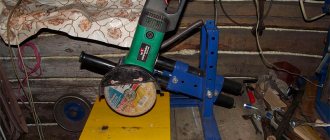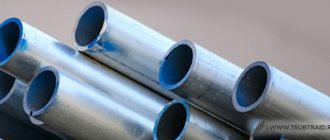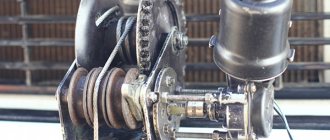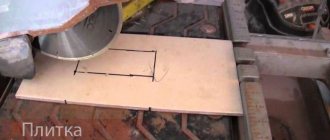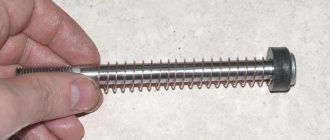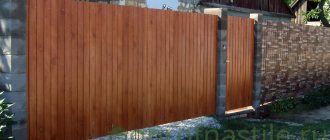We have been creating our product for more than 5 years, and we strive to make it better every day. We are finalizing the engineering design and improving the quality of the materials used. We have more than 1000 satisfied clients. Our enclosure is not a hut or a box for a generator, but a real home for a gasoline, diesel or gas generator. It can be used all year round due to unique options. A fully thought-out and automated solution for the autonomous use of a generator. Outdoor service life more than 15 years.
Containers for generators of our production are available all over Russia. The microcontainer for the generator can be placed on any flat surface, next to living quarters, and this will not disturb either you or your neighbors.
Our professional team of service center engineers will solve any problems related to pre-design inspection, installation, commissioning and provide service for generators.
A diesel generator in a casing allows it to be placed near a house or cottage; it operates very quietly. Our team has extensive experience in packaging gasoline and diesel generators
Advantages of installing a generator in a casing.
- Compactness and mobility;
- Low noise level;
- Increased service life;
- High reliability (protection level IP54);
- Practicality of service;
- Ventilation, gas exhaust, cooling;
- Anti-vandalism (locked with a key);
- Low cost.
Features of the type of container execution.
- Ventilation;
- Possibility of mounting any generator;
- Noise insulation 65-70 dB; 73-83 dB;
- Protection level (IP 54 outdoor installation);
- Feasibility of installing additional devices (for example, a heater);
- Possibility of installing a lock.
There are several types of containers. The most famous models are made from sandwich and false panels, as well as containers made from solid metal.
5 main stages of installing a generator on the street.
- Foundation. A concrete stand and rubber gaskets are used, which will provide additional support and also reduce noise and vibration. You need to know that the weight of the concrete base should be twice the weight of the device on it.
- Shock absorbers. Many generators are equipped with special shock absorbers, which can significantly reduce the level of vibration; for their correct operation, the generator must be well secured to its foundation.
- Air supply. It is necessary to ensure access to clean, cool air into the generator, free of impurities and dust. For this, it is recommended to install special filters and fans.
- Ventilation. During operation, the generator tends to heat up, and in order to increase its service life, an air exhaust system is installed into its container. The ventilation and cooling system is often already provided complete with special casings.
- Traffic fumes. The container must be equipped with an exhaust gas removal system and a special muffler to reduce the noise of the generator. Exhaust back pressure should not exceed the norm specified for engine installation. The permissible load on the engine must not be exceeded. The exhaust system must be short in length and have a minimum of bends. In the opposite case, this may affect the reduction in power.
Power plant noise level
As you know, sounds are transmitted in two ways: through air and vibration. When airborne noise enters the house, a person hears a roar from the engine and exhaust system. As for vibrational sound, it can be transmitted through solid bodies, creating discomfort in the room.
According to experts, the noise level from a power plant is 100 dB; to make it easier to understand, you should consider which sounds are equal to what.
- Conversation between two interlocutors – 40 - 50 dB;
- Motorcycle operation – 80 dB;
- Vacuum cleaner turned on – 90 dB;
- The sound of an airplane turbine is 120 dB.
Loud sounds in the room can not only lower your mood, but also prevent you from resting, and as a result, this problem can lead to diseases of the nervous system. Today, with the help of soundproofing and noise-absorbing materials, you can create ideally comfortable conditions.
Where to place the generator in the country? Big problem with choosing a place
Recently, more and more often you can find houses or cottages equipped with power plants. The main advantage of an autonomous generator is that it is possible to provide electricity to an object located at a distance from a populated area. For privacy with nature, many people move to remote areas where there is no electricity or running water. If water can be provided to a family using a borehole or a well, then gasoline or diesel generators are used as a power plant.
Photo: Casing for the generator. Author: Artemy Ivanov
A power plant, like any other internal combustion engine, produces a sound during operation, which not only interferes with constant operation, but can also lead to negative consequences. Unfortunately, an engine that will not make noise during operation has not yet been invented, so options for soundproofing the generator should be considered.
Mini container for generator. We choose an outdoor version for your generator.
In fact, as you have probably already noticed, there are not many outdoor options for portable electric generators, and the price is often almost higher than the generators themselves. What is the reason? let's figure it out.
How did this happen?
Historically, almost 80% of small-scale mechanization equipment, which includes portable air-cooled mini-power plants, was brought to us from abroad. And it’s not even a matter of engines, which we still don’t produce; they were there in Soviet times. But the fact is that times were not easy for our country and businesses were closing left and right. But please import. So, we imported mainly from Europe, and there the climate is much milder. It is enough to place the generator under a canopy and there is practically no threat to it. It’s different here, frosts are below 40 even in the middle zone and winters last for 4-5 months.
Generator for 30, casing for 70?!?
Yes, this is quite possible. For example, if the electrical unit is Chinese Huter, and the mini-container is equipped with all the necessary life support systems, which by the way are not cheap. Now let's figure out which life support systems for an electric generator are really needed, and which ones can be sacrificed to reduce the price.
Ventilation.
In confined spaces, a fan is really vital. An experiment we conducted about a year ago shows that a 5 kW generator, when operating without forced ventilation in a limited space (we took measurements in a mini-container measuring 1500*1000*100 mm), increases the temperature in 2 hours to almost 70 degrees! This is despite the fact that there were 400*400 mm ventilation grilles on both sides. And it’s not at all a matter of an overheated engine, which loses its service life; at a temperature of 70 degrees, the gasoline in the tank literally begins to boil. And this is no longer a broken electrical unit, this is already a safety issue... As a result, our experts came to the conclusion that the fan productivity should be at least 2350 m3/hour. You should also not forget about the thermal insulation of the gas exhaust system. Otherwise, after 8-10 hours of operation, something may melt from the exhaust pipe inside the mini container or paint may peel off from the heated door.
Hot reserve.
In order for the unit to start at any time, even at -30, you need a constant positive temperature inside the product. It would seem that there is a convector with a temperature sensor and the issue is resolved. However, not everything is so simple; blinds with free air access will negate all the efforts of the heater. The issue is solved by installing automatic blinds with a servo drive and insulating the mini container itself. This option only works in automatic mode, so autorun is simply necessary here.
Noise insulation.
Yes, yes, the structure must be assembled from sandwich panels, walls with a layer of mineral wool (from 5 cm) or covered with a special non-flammable noise-absorbing material from the inside of the product.
Anti-vandalism.
Every year, protection against theft is in increasing demand. If a couple of years ago users were happy with doors that could be locked with a key, this year GSM alarms are gaining popularity. It works to open the circuit. We opened the door of the mini-container and a minute later you received an SMS notification on your mobile phone. If the owner is far from the country house, there is the possibility of duplication (up to 10 numbers) to the telephone number of the local security guard or nearest neighbors. And to prevent the mini-container with the generator inside from being stolen, it is usually screwed with anchor bolts to the concrete base from the inside.
Service.
The structure must be assembled so that the side doors and the top can be opened. Side doors for maintenance and possible repairs, top cover for refilling. Moreover, without the top cap you can fill it up through a watering can and hose connected to each other, but you can’t see how much fuel is left. The fuel level sensor is always located on the top of the gas tank. Considering that it gets dark early in winter, it’s not bad at all to have light there.
It’s hard to cross out anything from all of the above, everything important and necessary. Meanwhile, the price, taking into account all these options, is appropriate, and the most affordable option will be the option with a auxiliary panel and ventilation
Gasoline electric generators are capable of starting at temperatures down to -20. And for local heating, special overhead heating elements are suitable, which are glued to the oil pan and the battery.
The editors of the Energy Broker company discussed with you the intricacies of installing generators outdoors. Good luck to you and good mood!
Production of enclosures and mini-containers - Silent solutions
We have been creating our product for more than 5 years, and we strive to make it better every day. We are finalizing the engineering design and improving the quality of the materials used. We have more than 1000 satisfied clients. Our enclosure is not a hut or a box for a generator, but a real home for a gasoline, diesel or gas generator. It can be used all year round due to unique options. A fully thought-out and automated solution for the autonomous use of a generator. Outdoor service life more than 15 years.
Containers for generators of our production are available all over Russia. The microcontainer for the generator can be placed on any flat surface, next to living quarters, and this will not disturb either you or your neighbors.
Our professional team of service center engineers will solve any problems related to pre-design inspection, installation, commissioning and provide service for generators.
Video review of our client on a mini-container of our production
Our advantages
Customized solutions
We will not only place your generator, but we will also do it beautifully; your generator will have its own home, and not a generator shed or a generator box. The enclosed gas generator operates quietly and reliably all year round.
We are improving
Every day we improve our solution, improving the design and materials used. You can’t make such a noise-proof enclosure for a generator with your own hands in the garage. A generator in a housing, three-phase or single-phase, can be purchased as a complete set with automation and installation
We find solutions
People come to us for a solution for noise insulation of a generator and we find it, no matter what you call our solution - a mini casing, a mini container or a Euro casing for a generator - we make the best sound insulation for the generator. And you don’t need to make a shelter for the generator; the generator in the casing works all year round.
Difference between single and three phase connection
All connections, whether in a single-phase or a three-phase network, are made completely identical, with the exception of the number of power wires. The only important nuance concerns the so-called control phase - if you connect the starter to the network, then its main contacts connect and disconnect the power wires from the network, and the power for the electromagnetic coil must also be taken from somewhere.
In a single-phase network there are no problems - there is only one phase and such a question simply does not exist, but in a three-phase network everything is somewhat more complicated - there are L1, L2 and L3. Without going into technical details, there is only one answer - for control circuits you can use any of the phases, but only one. That is, if the KM1 coil is powered from phase L3, then the control of the remaining starters, the “Start” and “Stop” buttons must also be “hung” only on it. This is not difficult to do - just note what color the wire is on the desired phase, and if the cable has single-color conductors, then stick or draw markers on them.
ENGINE SIZE
Typically, the larger the engine, the louder it runs, which also means that larger generators can make more noise than smaller ones. This is why, for example, a heavy duty 8000 watt portable generator has a higher decibel rating than a 2000 watt version in the same range.
However, there are exceptions. The Home Standby model is very powerful, but it comes with noise-canceling technology so it can be installed very close to your home without being too noticeable.
There are also inverter hybrids that have a higher capacity than traditional open frame inverters, making it lighter. This is a good alternative to regular portable generators if you are concerned about decibel levels.
Where to start building a generator house
You should start building a generator room by choosing a location for the future house. It is advisable that it is not too far away, but not too close to a residential building in order to avoid unforeseen situations.
Before starting construction, we recommend finding a 2x2 meter site. Why? Because practice shows that for your convenience, the generator room should be slightly larger than the generator itself by about 70 cm in each direction. That is, as a result we will get dimensions of approximately 2x2 meters. As for the height of the room, it should not be more than 2 meters.
Once you have decided on the location for the future generator house, you can proceed directly to its construction. A rough outline of this process should be organized as follows:
- Remove 10 meters of the top layer of soil to form an even pit.
- Pour sand into the resulting depression and compact it thoroughly.
- Lay 2-3 layers of roofing felt on top of the sand. It will provide reliable protection to the house from excessive moisture penetrating inside.
After this, proceed to laying the foundation. If you have a mini-power plant, you will need to make box-shaped formwork from the boards. Install reinforcement inside it, and then lay concrete. The height of such a slab should be from 12 to 15 cm.
If you have a diesel power plant with a power of 10 kW or more, then you will have to use reinforced concrete for the foundation (its mass must be at least 1.5 times the mass of the unit itself).
Such a foundation will be able to dampen vibrations of the generator during its operation. And that is why it is recommended to securely fasten the latter to a concrete slab in any way convenient for you. Also, do not forget to place anchors in the foundation. In the future, you will attach the frame of the house to them.
Application of the AVR system
An automatic start system is much more expensive than a manual one. However, external control is still necessary, since when starting the internal combustion engine it is necessary to control the throttle valve. After starting, the engine should warm up.
Many people prefer to use partial automation, with the main power connected through a contactor that opens when the input is turned off. The generator is then started manually. A time relay is built into it to warm up the engine and automatically switch to connecting the reserve to the house.
When the power supply is restored, the contactor is switched off and the load is again supplied to the mains.
The reserve with full automation of power supply contains microprocessor control of the operation of powerful generators.
Through a changeover, reversing switch (switch)
In fact, this is the same option with a distribution AV, but a three-position switch is already added to the circuit and is mounted permanently. Thus, there will be no need to remove the wires from the machine.
A switch of this type means that current can be supplied to it from 2 different branches when a load is connected to one. The middle position is neutral to prevent short-circuiting of the incoming wires. This scheme is very popular; it is chosen for car generators if there is no desire to spend money on an automatic transfer switch.
The generator has its own zero, so a conventional switch, single-wire, opening and switching only the phase, cannot be used.
If there is no factory 3-position switch, then you can assemble a temporary version; a two-position changeover design consisting of two 2-pole breakers is also suitable. It is advisable to take devices from the same manufacturer, identical in nominal value and size, this will make it more convenient to connect them.
The devices have a “jack”: one is upside down. The keys are fastened together; for this purpose, manufacturers make holes on them for pins, for which you can use thick, rigid wire or a paper clip. Thus, “foolproof protection” will be triggered immediately: one AV is turned on, the second is turned off at the same time.
You can build the described device from 4 single-pole AVs - the principle is identical. You can also not turn them over, switch each one separately, but there will be no “fool protection”, which is dangerous for an uninformed person.
The switch can be mounted anywhere in the line, but it is most advisable to install it near the generator, since the start-up is carried out in a certain order:
- Start.
- Waiting for it to warm up.
- Connect the load.
To prevent the mini-station from running idle when the main voltage resumes, make a tap for the signal in a noticeable position. And when you connect it through a switch, it will not light up constantly.
Graphically, a system with a changeover switch looks like this (there is no signal in the image - it is placed immediately after the meter):
Why do power plants burn out and break down: safety precautions when operating a generator
Important! A generator in a box is a high-risk system! See what can result from improper use and choice of container design. Kostasino
Kostasino
Pay special attention to the ventilation of the generator installed in a container! The example above is that the fuel boiled and the station caught fire. Install thermal protection in the ignition gap and provide for an emergency stop of the generator when the permissible temperature increases
The design of the box must be such that in case of force majeure situations - failure of the emergency system, fire and explosion, the lid is thrown back and the energy of the explosion goes “out into the street”. If you make a steel container, and not from composites, with a rigidly fixed lid, then the explosion pressure will increase severalfold. Steel fragments can injure or kill those passing by or the owner who will put out the fire.
conclusions
We talked about the basic principles of constructing a container for a generator and the features of its operation. If you approach the matter wisely and with straight hands, then, on your own, you can make a box that is in no way inferior to factory models and, most importantly, cheaper. If you still have questions, we recommend that you go to the topic Mini container for a generator and ask them to the author of the box. The topic also presents several more models of homemade containers for gas generators.
Articles that will be useful:
Model types
Installations that generate electric current are divided into types.
- Asynchronous. The design is simple and reliable. Important components are protected from moisture and dust. It is preferable to use devices for active loads. It is not recommended to use asynchronous generators to power electric motors.
- Synchronous. The units do not have the disadvantages characteristic of asynchronous ones. In addition, they maintain a more precise voltage. You need to choose a brushless design, which has much better current characteristics and less radio interference.
- Inverter models are more expensive and have less power. The characteristics of single-phase devices are worse, especially for cheap models. A 3-phase generator is slightly better. Other disadvantages are high cost and less reliability.
DIY generator box made from cork panels
There are several options for making a generator silent. Let's look at some. The easiest way is to make a box from cork panels.
The dimensions are determined as follows: we measure the generator and add 5–10 cm to the dimensions, depending on the type of insulation. If it is glass wool - 5 cm, if polystyrene - 10.
The box must be equipped with a door to provide access to control and maintenance.
You will need materials - panels for building the box, insulation, cement particle boards (CPB).
The panels are used to make a body without a lid, providing hinges on one of the sides. Sheets are prepared from DSP, 3 cm longer than the sides of the body, insulation is glued to them and allowed to dry for a day. The insulation is attached to the body with self-tapping screws, making sure that there are no protruding edges.
Openings are made in the walls for ventilation and equipped with grilles. Holes for the exhaust pipe are also cut. The lid is attached to hinges and installed in the place provided for it.
The exhaust pipe is secured with sealant.
Container for generator
Attempts to take the generator to another room, to a barn, have no effect. To muffle the noise, a special container or noise-proof casing is needed. You can make it yourself. By hiding the generator in such a box, it can even be placed on a balcony if the sound insulation is sufficient.
What should be in such a box? It is a “chest” lined with noise-absorbing materials, which provides ventilation and an exhaust pipe.
In such a casing, the generator will be able to operate in cold weather, which is an additional advantage. The box for the generator can also be created for insulation, which would allow the generator to be installed at a great distance from the house outdoors.
A homemade “house” for a generator may not look as elegant as a purchased one, it all depends on the creativity of the master, and yet the very fact that this can be done independently at minimal cost gives us the opportunity to choose whether to do it ourselves or buy a ready-made one.
Supply and exhaust ventilation system
The room for installing the gas generator must have a large area and a flow of fresh air to cool the engine. Installing a gas generator in a room with insufficient space is only possible if forced ventilation of the power station is installed with the inflow and outflow of cold fresh air. Openings must be well protected from snow and rain.
Published in
Regular power outages and fluctuations in electricity in a country house have probably repeatedly caused inconvenience to you or your loved ones. A universal solution in this case is to use a small power plant, which most often runs on gasoline or diesel.
At the same time, installing and ensuring uninterrupted and coordinated operation of a mini-power plant will require some effort from you. To do this, you will need a specially equipped room (in most cases it should be separate from the residential building) and fully comply with certain requirements and conditions:
- Fire safety;
convenient access for generator maintenance;
availability of ventilation;
protection from extreme temperature changes, direct exposure to the sun and other external negative factors;
protection from moisture.
Of course, in addition to this list, there are a number of other requirements necessary when building a house for a generator with your own hands. And it is about them that we will talk to you next.
All-weather covers
TYPES OF ALL-WEATHER EUROPEAN COVERS FOR PETROL GENERATOR, GAS GENERATOR OR DIESEL
Munroy offers enclosures in two standard lengths: 1200 mm for generators up to 8.5 kW and 1400 mm for generators from 8.5 to 15 kW. Each of the options is presented in three trim levels: basic, Optimal, Winter.
- Casing MANROY MK1200 basic - empty casing for generators up to 8.5 kW.
- Housing MANROY MK1200 Optimal - for the use of generators up to 8.5 kW in the warm season.
- Housing MANROY MK1200 Winter - for year-round use of generators up to 8.5 kW.
- Casing MANROY MK1400 basic - empty casing for generators from 8.5 to 15 kW.
- Housing MANROY MK1400 Optimal - for the use of generators from 8.5 to 15 kW in the warm season.
- Housing MANROY MK1400 Winter - for year-round use of generators from 8.5 to 15 kW.
Not long ago, we developed, tested and launched into production a SUPER QUIET PACKAGE that enhances the noise-insulating properties of the casing due to a unique design with a sound-reflecting labyrinth, a quiet centrifugal fan and an additional noise muffler. Next to the generator, packed in such a quiet casing, you can talk calmly without raising your voice.
- The MANROY MK1400 Silent Optimal casing is super quiet, for using generators up to 8.5 kW in the warm season.
- The MANROY MK1400 Silent Winter casing is super quiet, for year-round use of generators up to 8.5 kW.
The model of an all-weather noise-proof container is designed to accommodate diesel, gasoline and gas generators, as well as compressors or any other equipment of suitable dimensions.
PAINT OPTIONS
RAL 8019 brown standard
RAL 7035 light gray
RAL 7024 graphite gray
RAL 6009 spruce green
Painting in any color without increasing the cost, +12 calendar days to the production time.
EQUIPMENT OF ALL-WEATHER EUROPEAN HOUSING FOR GENERATOR
STANDART (basic equipment)
- Powder coated metal body.
- Sound-absorbing insulation 30 mm thick.
- The insulated double metal bottom is equipped with racks for lifting from the ground level, which protect the casing from corrosion. To enter cables into the bottom of the container, two corner rectangular openings are provided.
- Top cover with gas springs.
- Side door , which together with the top cover provides access to the generator from both sides.
- Inlet ventilation grille , painted in the color of the body.
- Exhaust inertial grille on the exhaust opening (the grille slats are closed in the normal position and are opened by the air flow when the electric fan is installed).
- Industrial locks with a set of keys.
- Pass-through element for the exhaust pipe , which is supplied not fixed to the housing and is installed when installing the generator in the casing wall opposite the power plant muffler. To do this, during the installation of the generator, a special square hole is cut in the wall.
To install the generator yourself in a container, you will need an exhaust tract kit, which is a stainless steel bellows with thermal insulation. You can read more about the installation stages in the article at the link. It is possible to install your generator in a Euro-casing at MANROY production (the installation price includes an exhaust tract kit).
Important! To operate the generator in the casing, it is necessary to install an exhaust cooling fan (OPTIMAL package - casing with an installed fan). Otherwise, the generator will overheat. Also, at the request of the customer, the mini-casing for the generator can be retrofitted with an auxiliary switchboard, an ATS (automatic transfer switch) and options for operation in winter (WINTER package): automatic blinds (air valve), heater with thermostat (convector).
OPTIMAL (summer package)
An electric exhaust fan is added to the basic package When the generator operates, the surrounding air is heated by the engine housing. In a small space in the casing, in the absence of ventilation, the air can overheat to 90-100 degrees within two minutes of generator operation. First of all, the plastic parts of the gas generator mechanisms melt, and the equipment may fail. To prevent damage to the generator, it is necessary to use electric fans to force the circulation of cooling air. We install industrial axial fans: fan for housing MANROY 1200 (220V, 135 W, 2670 m3/hour, 1380 rpm) and a more powerful fan for housing MANROY 1400 (220V, 190 W, 3830 m3/hour, 1380 rpm) min,) with a reserve calculated for the maximum heat dissipation of these casing models. The fans are all metal, with steel blades and an aluminum motor casing that can withstand high temperatures.
WINTER (winter package)
A winter package for the casing is added to the summer package: an electric convector for heating the interior space and aluminum blinds with electric belimo/siemens drive.
- Protected electric heater, allowing the generator to be used year-round. To guarantee the start of the generator in the cold season, an automatic electric air heater with a power of 500 W is installed on the inner wall of the casing. For installation in a confined space with the possible presence of fuel vapors, only certified heaters with closed heat elements are used. The heater is equipped with an adjustable thermostat and automatically maintains the temperature above freezing point, turning on only when the temperature drops. The heater is powered from an external power supply.
- Supply valve with automatic drive. When using an electric heater to quickly start a generator in winter, it is important to retain heat inside the casing structure. For this purpose, aluminum air louvers with electric drive are installed on the side of the supply ventilation grille. We use an automatic opening drive Belimo BLF 230 (Siemens) with spring return. When the generator starts, the drive turns the dampers, allowing access to outside air inside the casing. When the generator stops, the dampers are automatically closed by a return spring, retaining heat. We also offer these blinds in various sizes.
ADDITIONAL OPTIONS FOR MANROY COVER:
- Exhaust duct kit to divert generator exhaust gases outside the casing.
- Installation of the generator in the casing includes an exhaust tract kit for connecting the gas exhaust, spacers for raising the generator from the floor level and work on securing the generator and inserting the exhaust tract in the production workshop.
- Autostart DKG105 is an automatic start panel for a generator with an electric starter based on the Datakom DKG-105 controller. A reliable industrial controller monitors the generator and network voltages, automatically starts the generator when the external mains power is lost, and when power from the mains is restored, it cools the generator at idle for 90 seconds and then stops the engine. The kit also includes an emergency air temperature sensor, which commands the controller to stop the generator engine if the internal space of the casing overheats.
- Autostart D200 with monitoring - automatic start panel for a generator with an electric starter based on the Datakom D-200 controller. Emergency air temperature sensor included.
- ATS Schneider is an electrical panel designed to switch the power supply to a generator in the event of a mains failure. The built-in controller constantly monitors the network voltage, controlling unacceptable voltage drops and increases, phase sequence and sticking, full-phase and symmetry of the network voltage.
- ATS on ABB contactors is a completely silent transfer switch designed specifically for residential premises.
- The manual input switch (ABB switch) provides manual switching of inputs and indication of the mains and generator voltage.
CONSTRUCTION ELEMENTS OF AN ALL-WEATHER SOUNDPROOF ENCLOSURE
- Metal body made of galvanized steel (thickness 1.5 mm, laser cutting, press bending) with powder coating. The metal frame ensures the strength and durability of the mini generator container. Powder coating with a sintered polymer protects the all-weather box from external damage.
- The insulated double metal bottom is equipped with racks for lifting from the ground level, which protect the casing from corrosion. To enter cables into the bottom of the container, two corner rectangular openings measuring 40*60 mm are provided. The legs have holes for fastening to a concrete platform.
- The top cover and door provide access to the generator from both sides. For larger generators, a MK1400 casing with a lid and two doors is provided for more comfortable maintenance of the power plant.
- The exhaust inertial grille on the outlet ventilation window is installed in all housing configurations. The grille plates are opened by the air flow from the fan.
- Gas spring shock absorbers allow you to open the top cover of the casing without effort. It is enough to lift it about 30 degrees, then it opens itself. Gas lifts securely fix the lid in the open position, preventing a gust of wind from slamming it shut, which is especially important when refueling or servicing the power plant.
- Pass-through element for the exhaust pipe , which is supplied not fixed to the housing and is installed when installing the generator in the casing wall opposite the power plant muffler.
- Industrial locks with a set of keys. All casing locks (on the side door/doors, on the top cover and the door for access to the control unit) are closed with one key. The delivery set includes 2 sets of 2 keys.
- Industrial fittings with hidden fasteners connect the casing elements to each other. All joints of metal elements are glued with a polymer sealant and tightened with bolted connections that are invisible to the eye.
- The electric fan in the “OPTIMAL” and “WINTER” configurations protects the generator from overheating, providing forced ventilation of 2670 m3/hour in a smaller casing and 3830 m3/hour in a larger casing.
- The automatic heater in the “WINTER” configuration and the supply valve with an electric drive allow you to constantly maintain a positive temperature in the generator hut, which is necessary for a comfortable start in winter. Thanks to this option, the generator will be able to start in any frost.
MATERIALS FROM WHICH THE GENERATOR CASING IS MADE
- Galvanized steel sheets 1.5 mm thick (laser cutting, press bending). The metal frame ensures the strength and durability of the mini generator container.
- A special sound-absorbing and heat-insulating internal lining made of solid fiberglass boards covered with a protective layer of mineral fabric lines the walls of the soundproof generator container from the inside. This coating provides sound insulation and insulation of the generator, does not burn and does not absorb moisture. The thickness of the insulation is 3 cm (for casings used in northern conditions, a 5 cm thickness is possible). The insulation technology used compares favorably with sandwich panels in its durability and good noise reduction.
- Technical thermal insulation made of K-FLEX brand foam rubber has increased wear resistance and lines the top cover from the inside. This non-flammable material has high noise-absorbing properties and a porous structure and does not ignite at any temperature, even after contamination with machine oil or other fuels and lubricants. The noise level of the electrical unit in such a product is 12-15 dB lower, depending on the model.
- Powder painting with a sintered polymer protects the all-weather box from external damage, does not fade over the years and does not peel off under the influence of temperatures and precipitation. Minimum service life 15 years.
- Reinforced seal made of wear-resistant rubber , fixed along the contours of the openings. Automotive quality door seals fit hermetically to the casing walls, do not freeze to the doors, and remain elastic in cold weather. The degree of protection of the casing for the generator is IP 44.
External dimensions of the noise-proof Euro casing MANROY MK 1200: length - 1200 mm, width - 900 mm, height - 875 mm, MANROY MK 1400: length - 1400 mm, width - 940 mm, height - 975 mm.
WHY DO YOU NEED AN OUTDOOR CONTAINER FOR A GENERATOR?
- Protection of the power plant from bad weather. You can place the power station in an open area, since the generator will be reliably protected from snow and rain in the mini-container.
- Reducing electrical installation noise. Special porous sound-absorbing wall material will significantly reduce the noise of a running generator, which will help you get a quiet generator for your home.
- Preservation of property. The Eurocasing will help protect the generator from damage; it can also be locked with a key, preventing unauthorized access.
- Ensuring that the generator starts in winter. The outdoor mini-container has insulated walls, and in the “WINTER” configuration it is additionally equipped with a heater and ventilation valves. Thanks to this, in winter the temperature inside the box is automatically maintained at a positive level, which guarantees a quick start of the generator.
- Preservation of the aesthetic appearance of the site , thanks to a neat casing in which the generator can be hidden.
The all-weather noise-proof enclosure for the production generator will become a real home for a gasoline, diesel or gas generator. This is a cleverly designed generator shelter that solves basic storage issues. Thanks to the reliable design, the service life of our generator box is at least 15 years.
Mini-containers are designed to effectively protect the generator from harmful environmental factors, as well as to successfully start diesel and gasoline generators at low negative temperatures. Due to their practicality and ease of use, containers for small power plants are widely used on construction sites, in country houses, in country houses and cottages.
Our company specializes in customized solutions. We can develop a container specifically for your power plant and equip it with options that interest you. We created our first generator shelter in 2014. Over the subsequent years, we have improved the engineering design of our soundproofing casing for power plants, making it more and more convenient to use, constantly increasing its noise-insulating properties and making it more and more aesthetically pleasing. "Munroy" is a manufacturing company that provides a guarantee for equipment and all types of work for 12 months. All our products are certified (“Certificate of Conformity for containers and all-weather casings produced by MANROY” and “Certificate of Conformity of I degree (C0) fire resistance for containers for equipment manufactured by MANROY”).
MAIN PARAMETERS OF THE MANROY COVER
| Characteristic | Meaning |
| Material of construction | Galvanized steel 1.5 mm. Laser cutting, press bending. |
| Connecting elements | Internal bolted connections with press nuts. Industrial fittings with hidden fastening. |
| Coloring | Powder coated with high temperature curing. Matte structured surface, resistant to moisture and chemicals. |
| Insulation | Modern non-flammable coating made of dense mineral panels that do not absorb moisture. The thickness of the insulation is 30 mm, for northern use it is possible to install 50 mm. |
| Noise insulation | Sound-absorbing walls and cover, without the use of sound-reflecting metal linings. Noise reduction down to -20 dB. |
| Ventilation | Two ventilation openings at the ends of the body, protected by grilles with anti-corrosion coating. |
| Access | Access to the generator from two sides: through the cover and door. Locks, set of keys. Convenient generator refueling. |
| Sealing | Reinforced industrial door seal made of wear-resistant rubber. Fastening to the flange of the opening. The degree of protection of the casing for the generator is IP 44. |
| Cable entry | Two corner rectangular openings in the bottom. |
| Lid lifting mechanism | Gas spring shock absorbers with variable force. |
| Base | Insulated double metal bottom with racks for lifting from ground level. |
Diesel generators in casing
Closed type generators produce less noise. The casing is made of metal and soundproofing materials. The efficiency of the casing is quite high, which can significantly reduce the noise level by several times.
The outer skin is made of a metal frame and sewn up with solid sheets. Depending on the model, noise-absorbing casing for the generator, you can find products with control panels specifically for one or another device. A generator in a housing has a more aesthetic appearance, but the main advantage of the design is protection from vibration and airborne sounds.
Methods of noise protection
The proposed option may not eliminate noise 100%, it all depends on the power of the device. There are other ways to protect against noise. The most effective are complex solutions.
It is best to place the generator in a separate room, the sound insulation of which is thought out as much as possible.
Sip panels are used as sound insulation; they consist of two layers, inside of which there is a layer of heat-insulating material. Glass wool or basalt slabs are also used to absorb noise.
The second way to place a generator is to install it on the street away from a residential area. To do this, it must be placed in a box, for example, the one the manufacture of which is described above. A platform and convenient access to its control are specially prepared for the generator on the street.
The third way to reduce noise is to eliminate vibration of the device. Soundproofing solutions can be applied to every element that creates vibration.
The fourth way is to place the generator in the ground. Just like for the box, you need to take into account sound insulation (ground alone is not enough), ventilation and exhaust pipe.
Video overview of the solution:
Generator house design
Uninterrupted operation of the generator room will be possible only when you can constantly maintain the temperature inside not lower than +5°C. It is considered optimal for high-quality and uninterrupted operation of the unit
That’s why it’s so important to insulate the building.
Frame
For the frame of the generator room, we recommend that you use a steel angle. It can be attached to the anchors that we mentioned earlier and which you should have secured while laying the foundation.
A profiled metal sheet is welded to the internal and external posts with a distance of 10 cm between each. Afterwards, fill the resulting free space with high-quality heat-insulating material. Mineral wool, which is comparable in thermal characteristics to brickwork, is a good choice.
You will also need angle steel for the roof frame. It is necessary to lay metal sheets on its shelves, and put insulation on top of them. The roof itself should be made of metal tiles.
Door and platform to the generator
The width of the door to the generator room should be between 60 and 70 cm wide. Make the area between the doors and the generator itself 1x2 m in size. Between its other sides the distance can be smaller - from 50 to 60 cm.
Inside, be sure to finish the walls with special paint that will prevent the metal sheets from rusting. This way you will not only achieve a pleasant interior design, but will significantly extend the life of the house itself.
Ventilation
Any generator room must have a good ventilation system. The easiest way to do this is to take a pipe out of the house (we recommend a 10 cm galvanized iron pipe). If your power plant is air-cooled, you will need a forced ventilation system. Such a fan will need to be mounted either into the wall or directly into the air duct. In this case, the fan can perform quite different functions:
- blow on the engine of the unit;
- remove excess hot air.
If the power of your installation is below 6 kW, you will need to install at least 2 fans (each with a capacity of 1000 m3/h). They should turn on and off automatically during the start and end of operation of the generator engine.
Don’t forget about “bottom” ventilation, which is formed due to the leaky connection of the wall to the floor. This way, the exhaust gas, which will contain an excessive amount of carbon dioxide, can easily “leak” out of the generator room. The same applies to gasoline vapors, the accumulation of which can cause a fire or even an explosion. As you may have guessed, this is precisely the main reason why you should not “immerse” the generator house too much in the ground.
Additionally, you can hang shelves in your building where you will store your tools or containers with additional fuel. The brackets for them can be safely mounted on the wall of the structure.
Note! In addition to the process of building a generator house itself, it is very important to provide you and the specialists with the opportunity to comfortably service the generator. Therefore, here are a couple more points that should not be forgotten
1. Switch
Before turning on the generator, the switch must disconnect the house from the main network. Therefore, it should be in a convenient place and preferably in your sight. Do not forget also about its careful isolation from metal surfaces and other objects.
2. Automation
Almost any generator can be equipped with automation (if it is not provided for during production, of course). Such an automatic reserve input device will independently respond to power surges in the network. This will prevent your generator from running idle.
Please note that when you switch the generator, the voltage in the network will most likely drop briefly. During this period, it is advisable to provide particularly sensitive devices with an additional power stabilizer (computer, telephone, etc.)
It will just allow you to maintain the correct voltage level required for the operation of electrical appliances for several minutes.
You can use a classic UPS as a stabilizer. In addition, any uninterruptible power supply, in principle, will become a good protector during voltage surges in the network in your country house.
Installation and installation of the product
To install the electric generator into the casing yourself, you must:
- Mount the battery holder and install it
- Place the electrical unit in the casing and secure it inside, so that the unit does not touch the battery, leaving space between the convector and a place to connect the plugs to the electric generator itself.
- Install a safety temperature sensor on the electrical unit
- Attach the unit to the floor or to special metal crossbars
- Cut a hole for the exhaust pipe and secure it with 3.2*10 mm rivets in the color of the casing (previously cover the area where the pipe body fits with a sealant along the contour)
- Thermally insulate the flexible exhaust pipe (preferably with fiberglass tape for exhaust manifolds), tighten the tape with worm clamps.
- Install the pipe and tighten it with power clamps on both pipes.
- Insert the cable (control, power, auxiliary needs), put it in the corrugation, make the connection, fix the cable inside the casing (if the ATS is built into the casing, insert the corrugation into the cable glands and tighten).
Precautionary measures
The battery terminals should not touch metal parts or the fan housing. The fastening must be on the reverse side of the terminals. It is better to mount the unit and the battery holder inside the product using 5-6 mm exhaust nuts. The gas exhaust tape will burn in the first 15-30 minutes, do not be alarmed by the smoke from it, it will soon stop. The cables and convector should not touch the gas exhaust, the temperature of the exhaust gases reaches 400 Celsius.
Attention! Do not store oil, fuel, watering cans, rags, etc. in the casing. For comfortable refueling of the power station, use a compact fuel pump with outlet. Do not refuel the unit while it is running!
Diesel generators in casing
Closed type generators produce less noise. The casing is made of metal and soundproofing materials. The efficiency of the casing is quite high, which can significantly reduce the noise level by several times.
The outer skin is made of a metal frame and sewn up with solid sheets. Depending on the model, noise-absorbing casing for the generator, you can find products with control panels specifically for one or another device. A generator in a housing has a more aesthetic appearance, but the main advantage of the design is protection from vibration and airborne sounds.
How to decorate a generator house outside
Despite the small size of the generator room, it also belongs to the small form of architecture. That is why the right solution for you will be high-quality exterior decoration of the house. This includes the outlines of the house, its external design, and the selection of colors, which should be harmonious in relation to the rest of the objects on the site.
To make the generator house fit as harmoniously into the overall atmosphere of the garden or lawn as possible, plant low-growing shrubs around it. It is desirable that their crown be as dense and dense as possible. A good idea is to decorate the walls of the generator room with climbing plants. In addition to decoration, this move will allow you to protect the house from bright sun rays and heat, and also, vine plants will create additional shade for the building. In winter, such plants will provide excellent protection from strong winds and drafts.
If you need temporary storage for the generator, there is an easier way to do this. A simpler construction will suit you. However, do not forget that in such a situation you will need to turn on the generator exclusively in the fresh air.
Gasoline models
At the same time, most products in the economy class line have a high level of fuel consumption, which is more expensive compared to analogues.
Gasoline units require A-92/A-95 fuel to operate. Approximate power up to 15 kVA. But you won’t be able to use them for a long time, so connecting them as the only source of power supply is unacceptable.
When choosing this option, you need to determine which type of engine is right for you. If the two-stroke version has a performance oriented towards powering installations up to 0.9 kVA, then the four-stroke model allows limits for this indicator of 1-15 kVA.
The material of the cylinder block affects the service life of the equipment:
- for aluminum blocks - 500 hours, which is enough to cover short-term electricity needs;
- cylinders with a cast iron liner have a service life of up to 1500 hours.
A gasoline generator can have a four-stroke engine with quieter operation and a longer service life.
There are two possible types of its design:
- single-cylinder with a service life of 2.5-4 thousand hours;
- two-cylinder with the ability to operate up to 5 thousand hours.
The main advantages of this type of generator are ease of use, compactness and the ability to start in harsh conditions at temperatures down to -30 degrees. Its relative low cost and low noise level make it an excellent solution for compensating for short-term power outages.
Don't forget about the shortcomings. These are the high cost of fuel, storage restrictions of no more than six months, explosion and fire hazard.
Do-it-yourself noise-insulating casing for a generator
Purchasing a standard casing for a generator is not an easy and expensive task. Do-it-yourself noise insulation of a gasoline generator will help you make a design with the appropriate parameters and save on purchases. Using soundproofing materials, you can make a casing yourself, spending a little time and saving your own money. There are two options for making a casing that you can make yourself. The first option involves the use of expensive materials such as cork panels. As for the second manufacturing method, it differs in composition and materials used in the design.
Option one (quality)
The process of making a casing with your own hands is simple and includes several stages:
Photo: Do-it-yourself noise-absorbing box for a generator. Author: Artemy Ivanov
When all structural elements are fixed and dried, a generator can be placed in the product. Thanks to this casing design, the noise level of the generator is significantly reduced, which in turn contributes to the comfort of people living nearby.
Option two (cheap)
As for the second casing design option, the main distinguishing feature is the material used. If in the first case you need to use a cork board, then here sheets of plasterboard are used. The sequence of work processes is the same, but the overall price of the design is much cheaper.
Photo: Do-it-yourself noise-absorbing box for a generator (cheaper option). Author: Artemy Ivanov
Important! To make a noise-absorbing generator casing with your own hands, you should measure all dimensions and parameters with maximum accuracy. Only a responsible approach to the manufacture of the casing will help make it neat and effective in protecting against unpleasant sounds.
Advantages of standard housings
The autonomous power plant installed in the building has a relatively low noise level, which allows the equipment to be used not only outside, but also inside the facility. The metal casing also gives the equipment a more cost-effective appearance. In addition, a protective noise-absorbing casing for the gas generator helps protect the operating mechanism from damage and clogging. Currently, the market offers a large selection of enclosures that can effectively reduce noise levels.
In the manufacture of standard enclosures, the characteristics and features of the equipment are used, which makes it possible to most effectively reduce the sound level from the generator. Depending on the model of the unit, the optimal protective layer of sound insulation is selected. To ensure that the casing remains effective and reliable for a long time, the surface of the casing is painted with a special anti-corrosion paint. The appropriate casing is selected based on the type, model and dimensions of the generator design.
It is worth noting that standard products are initially designed for a certain level of noise, which they effectively absorb. Also, the unit fits perfectly into the frame and is fixed. When purchasing a standard casing, you don’t have to worry about its effectiveness, because all the device’s parameters of interest are indicated in the instructions, as well as the characteristics. Such products must have a quality certificate, which will help you buy an original product from the manufacturer.
The lineup
| Series "Silent" | Series "Super Silent" | Series "Diesel" |
| EK – 1200 Silent | EK-1400 Super Silent | EK – 2100 Diesel |
| EK – 1400 Silent | EK-1500 Super Silent | |
| EK – 1600 Silent |
You can choose your own unique color, or from the popular ones suggested below. The delivery time for a product with “its own” color is from 2 to 7 days.
The winter kit allows you to keep your electrical installation in “hot standby”; it is ready to start at any time, despite the cold. Warm-up time is reduced without compromising engine life.

